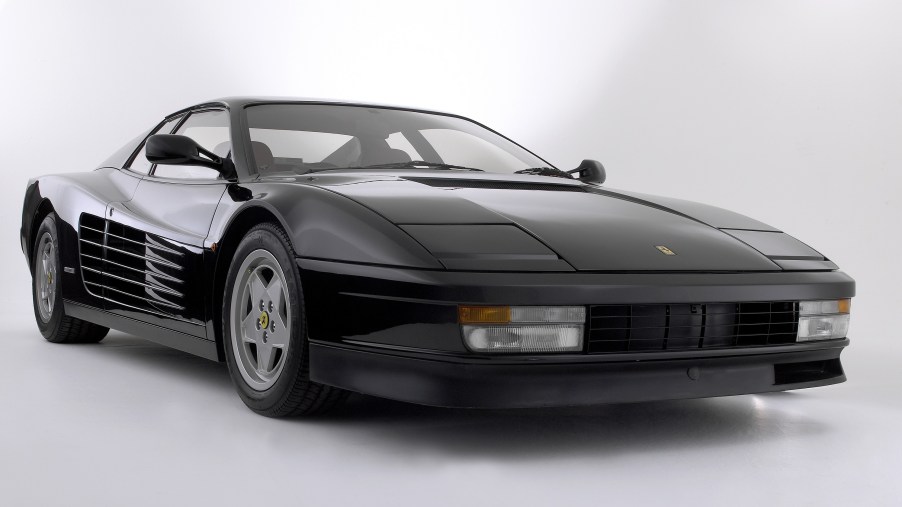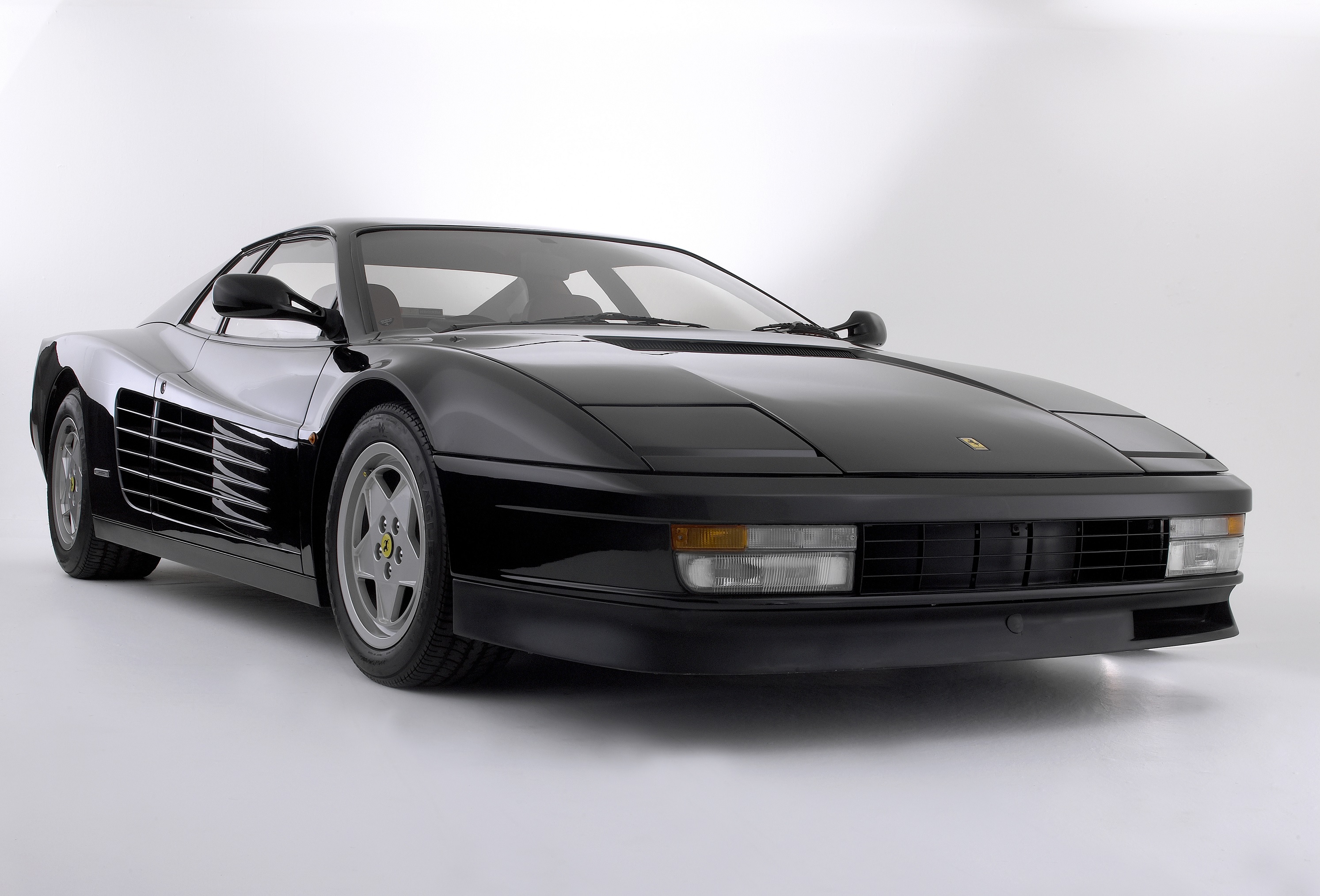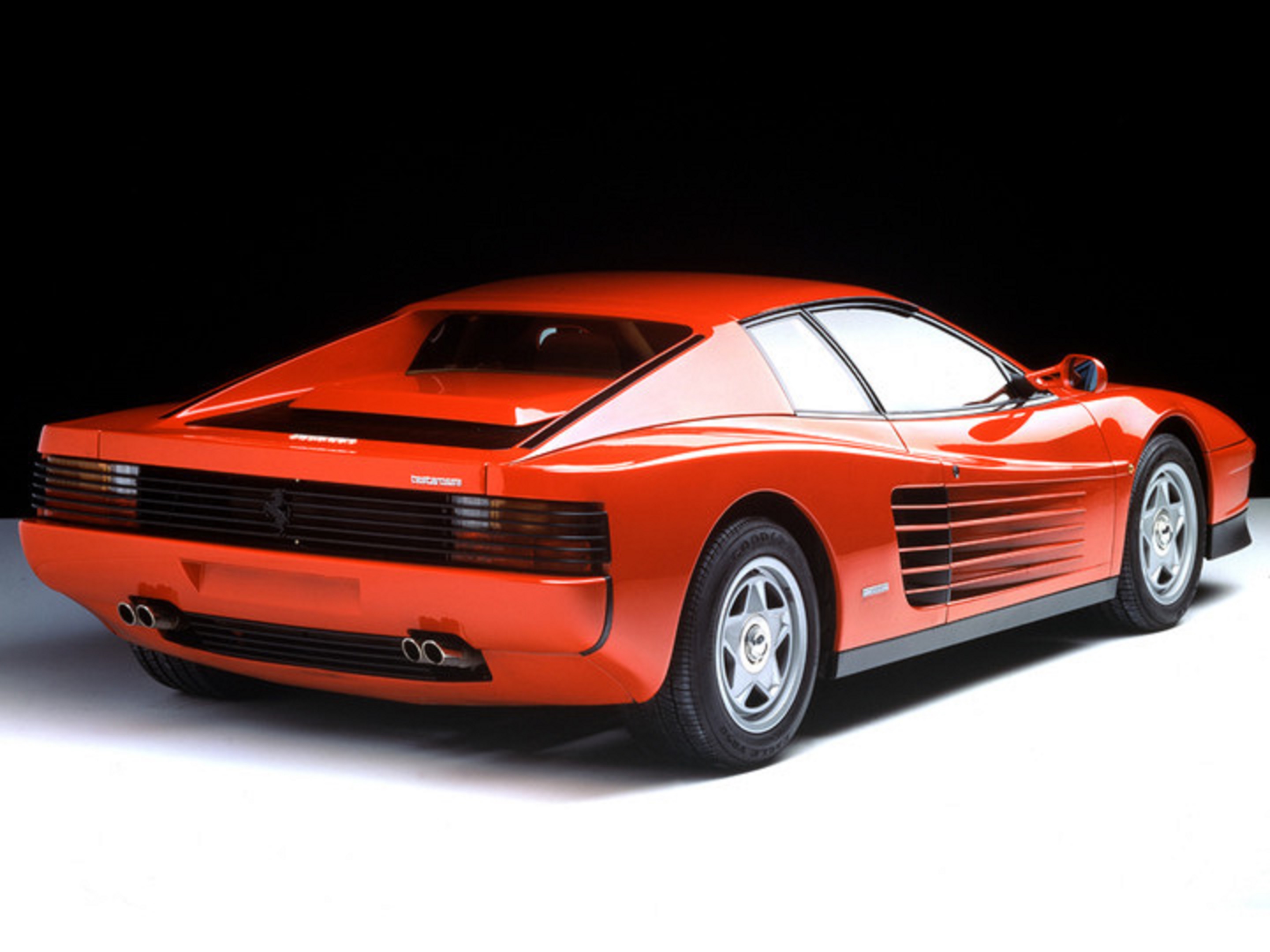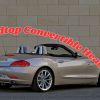
The Ferrari Testarossa Is Comfier and Cheaper Than You Think
1984-1991 Ferrari Testarossa article highlights:
- The 1984-1991 Ferrari Testarossa had supercar performance in its day, but it’s really more of a super grand-touring car
- Though not as fast as its rival the Countach, the Testarossa is by far the easier car to live with on a daily basis
- 1987-1991 are the most reliable Testarossa years; expect to pay around $120,000-$130,000 at least for a well-maintained example
In most people’s minds, handing over a mortgage-worth of cash for the keys to a Ferrari means getting into a serious supercar. But not every Prancing Horse is a super sports car or worth a king’s ransom. Some classic and used Ferraris are neither, but that doesn’t make them any less special or worthy of their badges. And perhaps the best example of this is the Ferrari Testarossa.
The Ferrari Testarossa isn’t a supercar, it’s a super GT


| 1984-1991 Ferrari Testarossa | |
| Engine | 4.9-liter flat-12 |
| Horsepower | 385 hp (Euro-spec) |
| Torque | 361 lb-ft (Euro-spec) |
| Transmission | Five-speed manual |
| Curb weight | 3320 lbs (dry) 3700 lbs (with fluids) |
| 0-60 mph time | 5.0 seconds |
Even those who didn’t grow up watching Miami Vice are likely familiar with the Ferrari Testarossa. However, while many recognize this quintessential 1980s poster car, they also likely misunderstand what it is. Underneath those iconic side-strakes, the Testarossa isn’t a ‘true’ supercar, though it offered super performance in its day. But then, Ferrari didn’t design to be a supercar in the first place.
After Lamborghini sprung the Miura on the world, practically every exotic brand started working on mid-engine road cars. Ferrari’s first attempt came only a few months later in the shape of the 206 Dino. But its V6 engine meant it wasn’t quite on the V12-powered Miura’s level. So, a few years after the Daytona debuted, Ferrari launched the 512 BB, which had a mid-mounted 4.9-liter flat-12. Yes, it’s called ‘Berlinetta Boxer,’ but the 512 BB really has a flat-12.
Anyway, while the 512 BB handled and rode even better than the Miura, it had a problem. See, by the time it unveiled the Daytona, Ferrari’s V12-powered cars had morphed from sports cars to grand tourers, aka ‘GTs.’ They could certainly handle themselves on a twisty mountain road, but they were really about crossing continents in high-speed comfort. And the 512 BB, though more refined than the Miura, was really a sports car, not a GT.
This didn’t matter initially for the U.S. as Ferrari never sold the 512 BB here for emissions reasons. However, because the U.S. market was vital for the brand, its successor needed to be quick, stylish, and most importantly, comfy. And that successor was the 1984 Ferrari Testarossa.
It’s not as fast as the Countach, but the Testarossa is the comfier classic cruiser—and it’s still worth driving
Apart from the Lamborghini Countach, few cars embody the 1980s better than the Ferrari Testarossa. I mean, there’s a folding mirror built into the glovebox, for Don Johnson’s sake. Yet while these rad road warriors have equal street presences, the Testarossa is better equipped to live on the street.
Yes, in a drag race, the Raging Bull beats the Prancing Horse. However, where the Lambo is hot, cramped, and a bit crude, the Ferrari is spacious, relaxing, and refined. But that doesn’t mean the Ferrari Testarossa isn’t thrilling to drive. The gated manual clicks delightfully when you row it, while the unassisted steering lightens and speaks up brilliantly on the move. Meanwhile, the fully-independent suspension and ventilated disc brakes keep you planted and under control.
As for the Testarossa’s flat-12, U.S.-spec cars were a bit strangled by catalytic converters. However, as Throttle House notes in the video above, Euro-spec cars with Tubi performance exhausts ring out with a thrilling soprano song. And while you must wring the engine out to get max power, the car makes you want to do it. This is a true classic Ferrari: mechanical, analog, engaging.
Then, when you’re done enjoying corners, you can enjoy the Ferrari Testarossa’s other qualities. Its interior, for example, is reasonably spacious, covered in rich leather, and fitted with comfortable seats. This super GT also has decent storage space and factory A/C, which got better in 1987, Hagerty says. Plus, power windows and power mirrors. And because it’s a 1980s car, it has excellent visibility.
The Ferrari Testarossa might not be the ultimate 1980s supercar, but it’s exactly what it’s supposed to be.
How much does a Ferrari Testarossa cost?
Although it’s rising from the depths of depreciation, getting your hands on a Ferrari Testarossa isn’t necessarily budget-busting. It’s not the most affordable classic Ferrari, but neither is the most expensive. However, as is the case with many older Ferraris, maintenance can be expensive, largely because this GT needs an engine-out cam-belt service every five years/15,000 miles. So, if you’re going shopping, set aside some wrenching funds and get a pre-purchase inspection.
As for which Ferrari Testarossa you should buy, Hagerty recommends getting a 1987 or later one. In addition to the A/C upgrades, Ferrari also updated the fuel-level gauge, flywheel, and water/oil pump chain drive. That last part is a known failure point in earlier cars. Also, 1988 saw the Testarossa get a new transmission, additional frunk weather protection, less-finicky wheels, updated fuel injection, and allegedly revised suspension. And since Ferrari made minor changes to the car in 1989 and 1990, later is arguably better.
Assuming you’re following Hagerty’s recommendations, a good-condition 1987 or 1988 Ferrari Testarossa typically costs around $120,000. Meanwhile, a 1990 or 1991 car in similar shape usually costs about $130,000. Expect to pay more for a Testarossa with a documented recent cam-belt service.
Oh, and one more thing. This is a classic Italian car that genuinely benefits from the old ‘Italian tune-up.’ So, if you find yourself in a Testarossa, put on some synth and let the engine sing.
Follow more updates from MotorBiscuit on our Facebook page.


